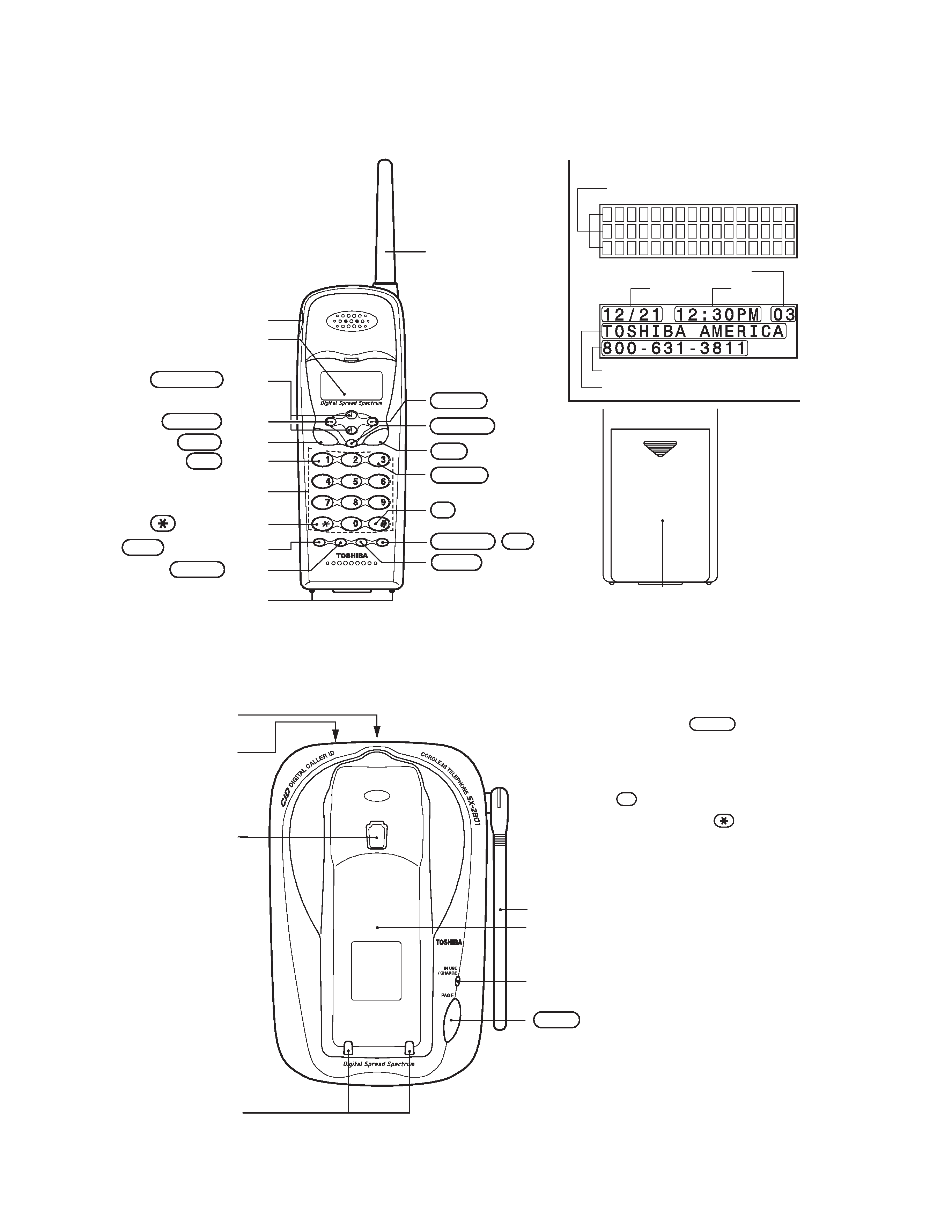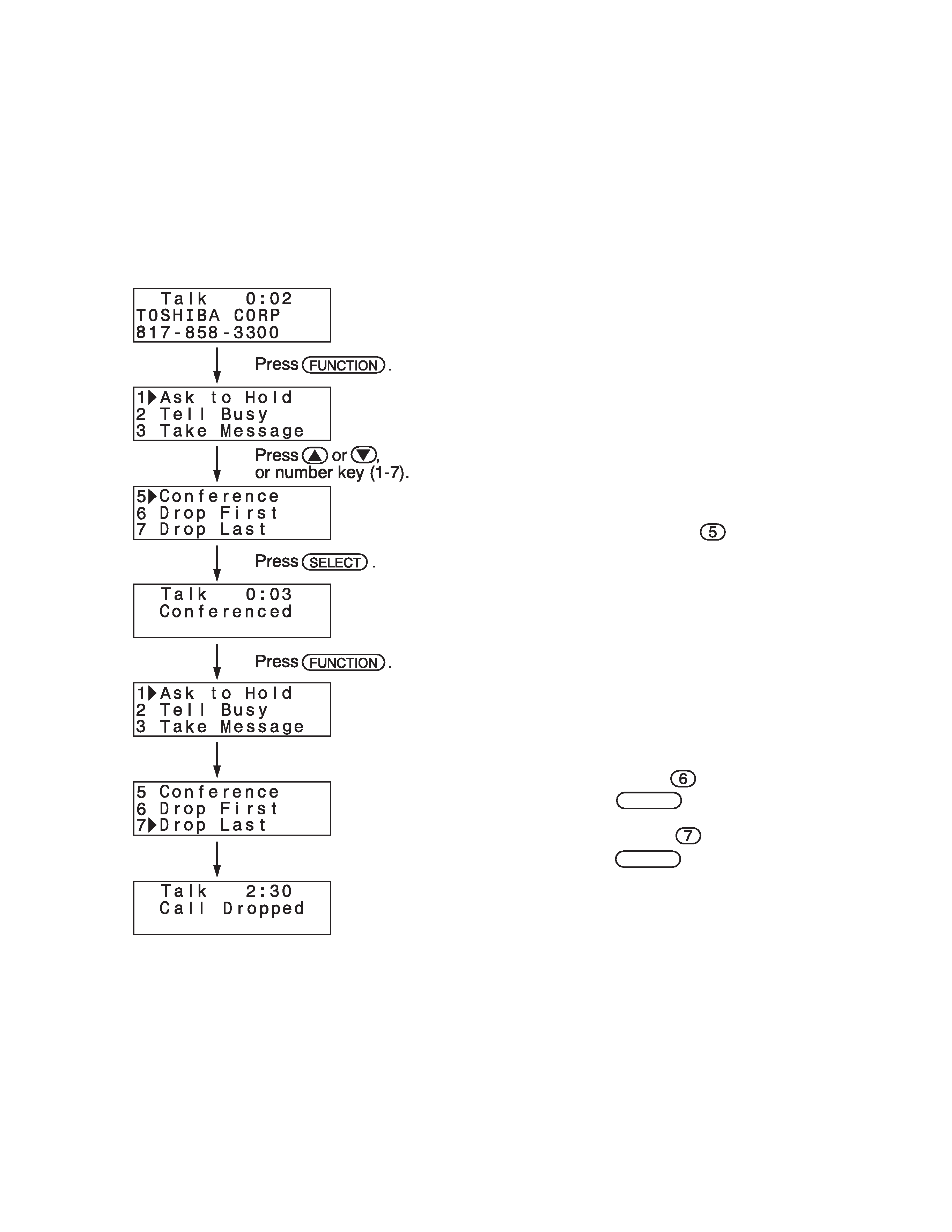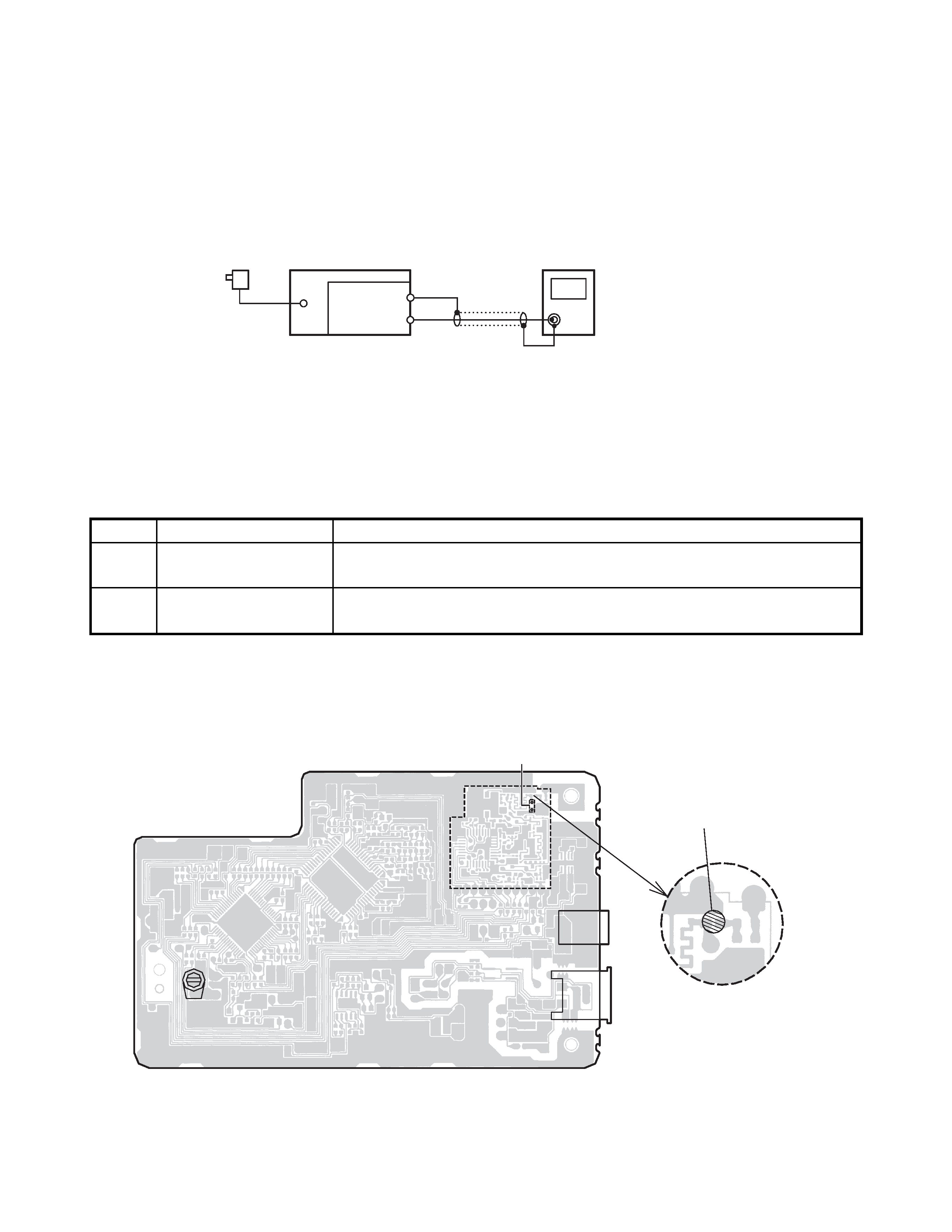
SERVICE MANUAL
PUBLISHED IN JAPAN, May., 2001
FILE NO. 2B0-200105
SX-2801
CORDLESS TELEPHONE

-- 1 --
CONTENTS
SAFETY PRECAUTIONS ...................................................................................................................... 1
OPERATING CONTROLS ................................................................................................................... 2
CALL WAITING OPTIONS ................................................................................................................... 3
ALIGNMENT PROCEDURE ................................................................................................................. 4
BLOCK DIAGRAMS .............................................................................................................................. 6
SCHEMATIC DIAGRAMS ..................................................................................................................... 8
TROUBLESHOOTING HINTS ........................................................................................................... 12
IC AND TRANSISTOR VOLTAGE CHART ....................................................................................... 18
SEMICONDUCTOR LEAD IDENTIFICATION ................................................................................... 22
ELECTRICAL PARTS LOCATION ..................................................................................................... 25
WIRING DIAGRAMS .......................................................................................................................... 27
EXPLODED VIEW AND MECHANICAL PARTS LIST ...................................................................... 29
PARTS LIST ........................................................................................................................................ 31
ASSEMBLY PARTS LIST ................................................................................................................... 39
SPECIFICATIONS .............................................................................................................................. 40
SAFETY PRECAUTIONS
Before returning any models to the customer, a safety check of the entire instrument should be made.
The service technician must be sure that no protective device built into the instrument by the manufacturer
has become defective or inadvertently degraded during servicing.
1. WARNING:
Alterations of the design or circuitry of these models should not be made.
Any design changes or additions such as, but not limited to, circuit modifications, auxiliary speaker
jacks, switches, grounding, active or passive circuitry, etc. may alter the safety characteristics of these
models and potentially create a hazardous situation for the user.
Any design alterations or additions will void the manufacturer's warranty and will further relieve the
manufacturer of responsibility for personal injury or property damage resulting therefrom.
2. PRODUCT SAFETY NOTICE
Many electrical and mechanical parts in this chassis have special characteristics. These characteristics
often pass unnoticed and the protection afforded by them cannot necessarily be obtained by using
replacement components rated for higher voltage, wattage, etc. Replacement parts that have these
special safety characteristics are identified in this manual and its supplements; electrical components
having such features are identified by a
in the schematic diagram and the parts list. Before replacing
any of these components, read the parts list in this manual carefully. The use of substitute replacement
parts that do not have the same safety characteristics as specified in the parts list may create shock,
fire or other hazards.

-- 2 --
OPERATING CONTROLS
BASE UNIT CONTROLS
REDIAL
L.D.
LOCAL
MEM
TONE
PAUSE
FUNCTION DELETE
CHANNEL
FLASH
VOL/RING
SELECT
TALK
CID
ABC
JKL
TUV
OPER
DEF
MNO
WX
YZ
PQ
RS
GHI
Dialpad
Charging contact
LCD Display
Handset Jack
Antenna
VOL/RING Button
TALK Button
L.D. Button
(TONE) Button
PA
MEM (Memory) Button
USE Button
FUNC Button
DELETE
CH Button
CID Button
FLASH Button
LOCAL Button
SELECT Button
(PULSE) Button
#
REDIAL Button
DC IN 9V Jack
LINE modular Jack
Antenna
Cradle
Hook
IN USE/CHARGE LED
Charging Contact
PAGE Button
HANDSET CONTROLS
SETTING THE DIAL MODE
1 Press and hold FLASH until you hear a
confirmation tone.
2 To set the dial mode for pulse dialing,
press # . Or to set the dial mode for
tone dialing press
. A confirmation
tone sounds to indicate the setting is
complete.
Rechargeable
Battery Pack (back)
LCD
Number of calls
Dot matrix display
Date
Time
Caller's telephone number
Caller's name

-- 3 --
CALL WAITING OPTIONS
You receive a call waiting call.
A list of options appears.
(For more information on the options, see the
owner's manual.)
Select one of seven options.
To select "Conference", press
or scroll down
to "Conference".
Allows you to speak with your first and second
caller to have a 3-way conference call.
The list of options appears.
· To drop 1st caller, press
or scroll down to
"Drop First", then SELECT .
· To drop 2nd caller, press
or scroll down to
"Drop Last", then SELECT .
A confirmation screen appears.
Your phone gives you new options for call waiting. At the touch of a button, you can ask the caller to
hold, send them to your voice mail service, or conference them into your current call. You may be
required to subscribe to a voice mail service, call waiting, and call waiting options to use these
features.
Follow these steps to use call waiting options. This is an example for "Conference".

-- 4 --
ALIGNMENT AND ADJUSTMENT
BASE UNIT
Transmitter Section
Connections
Spectrum Analyzer
Alignment Point Location on Base Main PCB and Base RF PCB
AC Adapter
(120V 60Hz)
Base Unit
Test Point
(J301)
Spectrum Analyzer
RF PCB
CT1
J301
J1
J2
Base Main PCB
Remove solder
before alignment
Base RF PCB
Test Point
Alignment Procedure
Step
Adjustment
Remarks
1
CT1
(Frequency Adjust)
Connect the Spectrum Analyzer to test point (J301).
Adjust CT1 so that the frequency is 916.992 MHz.
2
--
Confirm that the power instructions of the Spectrum analyzer reaches
+11.5 ±3.0 dBm. After alingnment, be sure to re-solder the pattern.
Preset
a) Turn on AC power while the "PAGE" key is being depressed.
b) Before alignment, be sure to remove solder on the pattern of RF PCB (refer to the illus. below).
